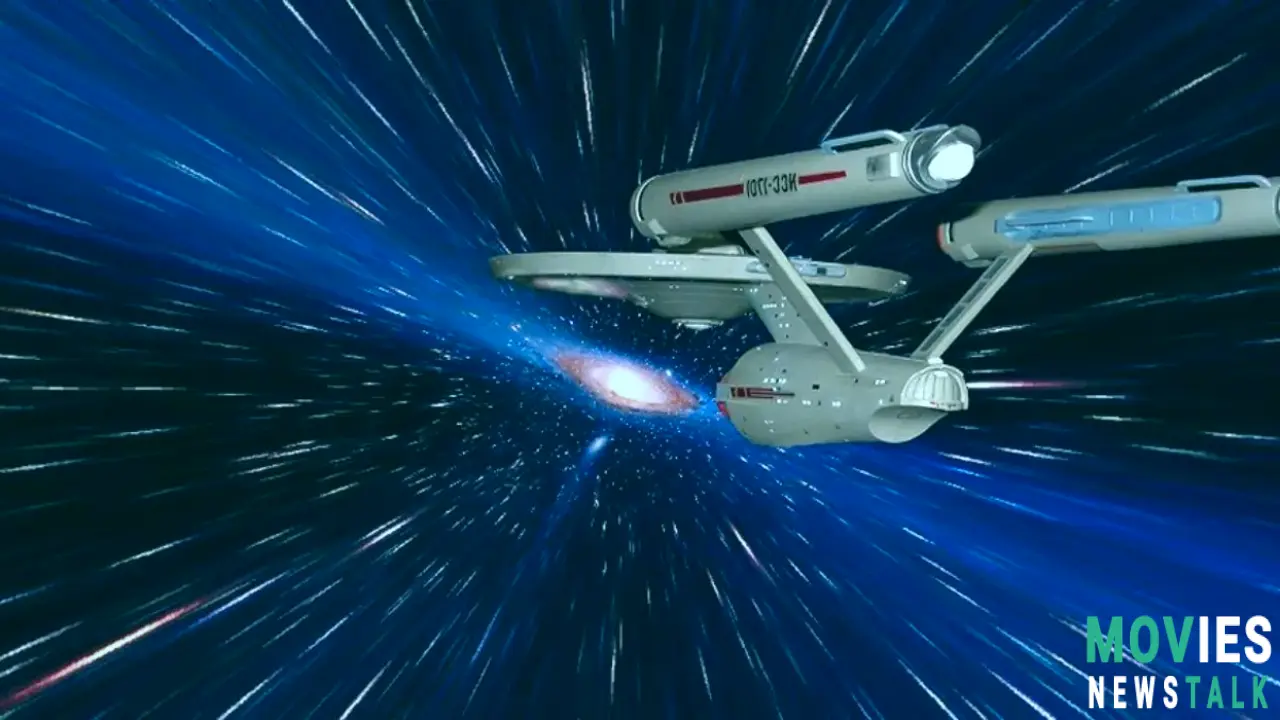Ever wondered how far those Star Trek ships can go? It’s all about warp speed, but even that awesome faster-than-light travel has its limits!
Warp Speed in Star Trek
In the Star Trek universe, warp drive is a big deal. It's basically a technology that lets starships zoom across the galaxy at speeds faster than light. The ability to warp is how they measure if a civilization is ready for "first contact". Vulcans first met Earth after Zefram Cochrane (played by James Cromwell) made humanity's first successful warp flight. The Prime Directive in Starfleet even states you only meet another planet once they invent warp drive!
The galaxy is HUGE, and without warp drive it would take FOREVER to travel between planets. They use warp factors to measure their speed: Warp 1 is the slowest, and Warp 10 is supposed to be the fastest (in theory, anyway!). Exactly how warp speed works isn't always clear throughout the shows but basically they use a warp drive to create a barrier around the ship so they can move faster than light! By the 24th century, it was the main way of getting around.
Warp Factor 10: The Myth
Warp 10 is said to be the absolute top speed, but what that means changed over time in Star Trek. In Star Trek: The Original Series, Captain Kirk's Enterprise hit Warp 10 (or faster!) several times. But, as the shows progressed, and ship tech got better, Warp 10 changed meanings. Eventually Warp 10 meant "infinite velocity"! Meaning a ship would exist in all points of space at once.
Ships can reach speeds super close to Warp 10. In the Star Trek: The Next Generation episode "Where No One Has Gone Before", a super powerful being, "The Traveler", basically took the Enterprise-D to the edge of the universe. Their speed was too much for the regular measuring tech!
Just How Fast IS Warp 10?
Warp 10, if it's true infinite velocity means anything, should mean travel anywhere instantly. But this only happens in theory. Even in Star Trek: Picard (25th Century), 9.99 was the fastest Starfleet went. In Star Trek: Voyager, Tom Paris actually hit Warp 10 in a modified shuttle, but...things got messed up. BIG TIME. He got weird and became a sort of amphibian.
Zefram Cochrane invented warp drive on Earth in 2063. But, some alien species, such as the Vulcans, had it for WAY longer! In Voyager, Captain Janeway tried to go beyond Warp 10 too, and there were big changes!
Warp Factor 36 and Beyond!
In Star Trek: The Original Series, and Star Trek: The Animated Series, ships went way past Warp 10. sometimes! They could reach even Warp 22! It usually involved some other super powerful forces, such as some crazy advanced aliens.
In TOS "That Which Survives", the Enterprise got sabotaged up to Warp 14.1, which was REALLY close to destruction. In "The Counter-Clock Incident" which was the final TAS episode, The Enterprise hits a ridiculous Warp 36 all thanks to some wacky tech!. This happened many times.
So while Warp 10 is like a mythical top speed. It seems impossible, as there has only ever been one recorded success from doing this and that made things very different for the series.
To learn more about those awesome warp factors and their significance on each mission make sure you watch Star Trek. The entire series shows you exactly why space exploration is so full of wonder, and those cool spaceships and the entire dynamic and compelling characters who pilot them truly show a long-lasting impact on fans and make it a series worth diving back into!

